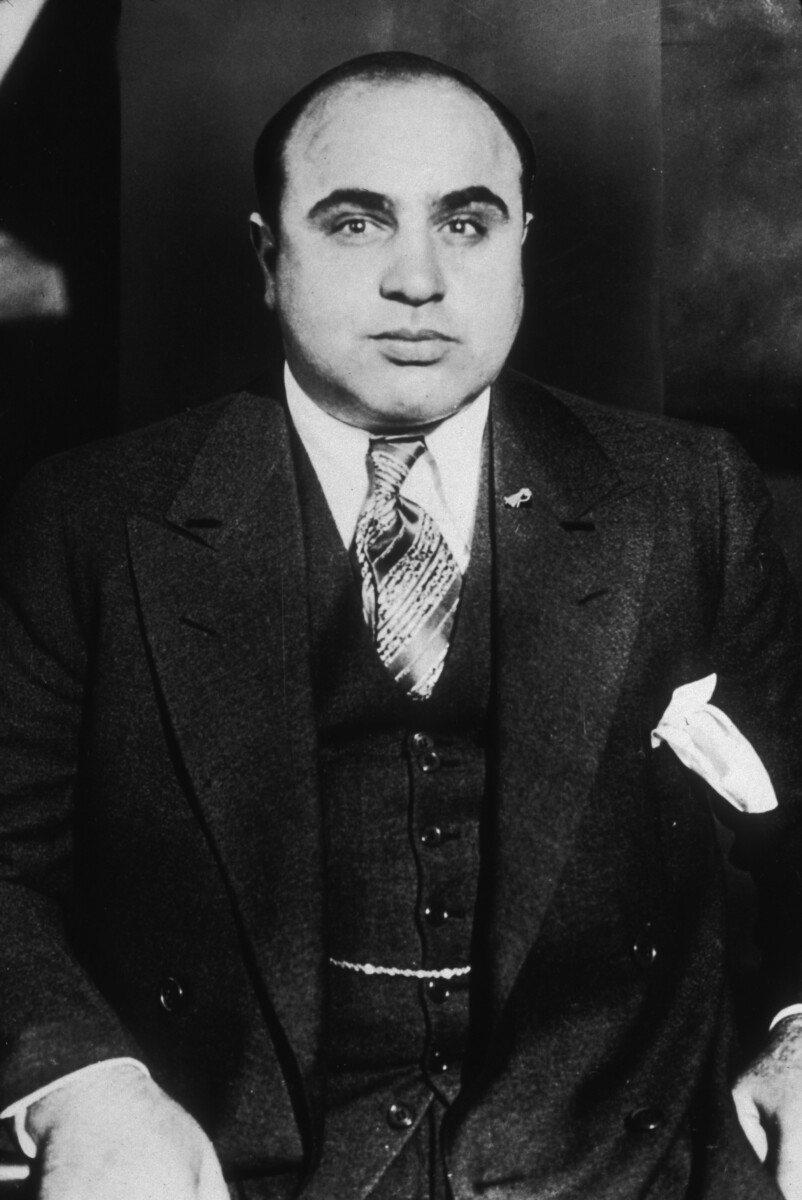The Radical Proposal That Nearly Changed America Forever

Picture this: America without the Senate, where only the House of Representatives makes federal laws. This isn’t some wild fantasy – it almost happened during one of the most turbulent periods in American history. The proposal to abolish the Senate gained serious momentum in the 1910s, driven by Progressive Era reformers who saw the upper chamber as an elitist roadblock to democracy. What started as whispered conversations in Washington corridors nearly became a constitutional revolution that would have fundamentally altered how America governs itself.
Progressive Fury Against the Millionaires’ Club

The Senate of the early 1900s earned the nickname “Millionaires’ Club” for good reason – it was dominated by wealthy industrialists and their allies. Progressive reformers like Robert La Follette of Wisconsin and William Jennings Bryan viewed the Senate as a corrupt institution that served corporate interests over ordinary Americans. The chamber’s resistance to popular reforms like the direct election of senators, women’s suffrage, and labor protections fueled growing resentment. By 1911, prominent newspapers were regularly publishing editorials calling the Senate “an obsolete institution” that had outlived its usefulness in a modern democracy.
The Seventeenth Amendment Wasn’t Enough

Even after the Seventeenth Amendment in 1913 allowed direct election of senators, many reformers believed the fundamental structure remained flawed. They argued that equal representation for all states, regardless of population, gave disproportionate power to rural, conservative areas. House Resolution 681, introduced in 1914, would have eliminated the Senate entirely and transferred all legislative power to the House of Representatives. The resolution gained support from over forty House members, primarily from urban districts where Progressive sentiment ran strongest. Critics pointed out that Wyoming’s 145,000 residents had the same Senate representation as New York’s 9.1 million people, calling it a democratic absurdity.
Labor Strikes and Senate Obstruction

The massive labor strikes of 1912-1914 highlighted the Senate’s role in blocking worker-friendly legislation. While the House passed bills supporting collective bargaining rights and workplace safety standards, the Senate consistently killed or watered down these measures. The tragic Triangle Shirtwaist Factory fire of 1911, which killed 146 workers, had sparked nationwide outrage and demands for federal workplace safety laws. When the Senate blocked comprehensive safety legislation in 1913, Progressive newspapers declared it “complicit in industrial murder.” This obstruction provided powerful ammunition for abolition advocates who argued the Senate was literally a matter of life and death for working Americans.
World War I Changes Everything

America’s entry into World War I in 1917 dramatically shifted the political landscape and effectively killed the movement to abolish the Senate. Wartime unity made radical constitutional changes seem unpatriotic and disruptive to the war effort. The Senate’s foreign policy powers became crucial as President Wilson negotiated with European allies and planned for post-war reconstruction. Many former Senate critics recognized that the chamber’s deliberative nature and longer terms provided stability during international crises. The abolition movement, which had seemed unstoppable just years earlier, quickly faded as Americans rallied around existing institutions.
The Constitutional Convention That Never Happened

Between 1913 and 1916, reformers seriously explored calling a constitutional convention specifically to eliminate the Senate. Article V of the Constitution allows states to petition for such a convention, and twelve states had indicated support for Senate abolition by 1915. However, constitutional scholars warned that a convention could spiral out of control and rewrite the entire Constitution, not just eliminate the Senate. The specter of unintended consequences, combined with fierce opposition from smaller states, prevented the movement from reaching the required two-thirds threshold of states. This near-miss represents the closest America has ever come to fundamentally restructuring its legislative branch through the constitutional amendment process.
Small States Fight Back

States like Delaware, Wyoming, and Nevada launched coordinated campaigns to preserve the Senate, recognizing that abolition would devastate their political influence. They hired prominent constitutional lawyers and organized publicity campaigns emphasizing the Founders’ wisdom in creating a bicameral legislature. Small-state governors met in Denver in 1915 to coordinate their opposition, arguing that Senate abolition would effectively create “taxation without representation” for their citizens. Their efforts included threatening to withhold federal tax payments if the Senate were eliminated, a move that would have created a constitutional crisis. These defensive measures proved highly effective in slowing the abolition movement’s momentum.
The House’s Own Resistance

Surprisingly, many House members opposed abolishing the Senate, despite the obvious increase in their own power such a move would create. House Speaker Champ Clark argued that the Senate served as a valuable “cooling chamber” that prevented hasty legislation during emotional periods. Veteran representatives worried that eliminating the Senate would make the House a target for every special interest group and lobbying effort in the country. They feared the increased responsibility would make House elections even more expensive and contentious than they already were. Internal House debates revealed deep concerns about whether a single legislative chamber could handle the complexity of governing a nation of over 100 million people.
The Role of Women’s Suffrage

The fight for women’s suffrage became intertwined with Senate abolition in unexpected ways. Some suffragettes initially supported eliminating the Senate because it consistently blocked the Nineteenth Amendment, viewing the upper chamber as a bastion of male privilege. However, strategic suffrage leaders like Carrie Chapman Catt ultimately opposed Senate abolition, recognizing that bicameralism provided multiple pathways to achieving their goals. When the Senate finally passed the women’s suffrage amendment in 1919, it removed one of the strongest arguments for abolition. The successful ratification of the Nineteenth Amendment in 1920 actually demonstrated the Senate’s capacity for reform rather than proving its obsolescence.
Economic Interests and Banking Reform

The creation of the Federal Reserve System in 1913 showcased both the Senate’s obstructionist tendencies and its potential for constructive legislation. Wall Street banking interests initially used their Senate allies to block meaningful financial reform after the Panic of 1907. However, the Senate Banking Committee ultimately crafted a more stable and comprehensive Federal Reserve Act than the House’s initial version. This legislative success complicated the abolition narrative, as reformers had to acknowledge that the Senate sometimes improved legislation rather than merely blocking it. The banking reform debate revealed how the Senate’s longer terms allowed for more careful consideration of complex economic issues.
Media Coverage and Public Opinion

Newspaper coverage of the Senate abolition movement varied dramatically by region and political orientation. Urban newspapers in cities like Chicago, Cleveland, and San Francisco regularly published editorials supporting elimination of the Senate as a relic of aristocratic government. Rural and small-town newspapers, particularly in Western states, defended the Senate as protection against urban domination of national politics. Public opinion polls conducted by literary magazines showed roughly even division on the issue, with urban residents supporting abolition by margins of nearly two to one. However, the lack of scientific polling methods in that era makes it difficult to assess true national sentiment on such a radical constitutional change.
The Lasting Impact on American Politics

Though the movement to abolish the Senate ultimately failed, it left permanent marks on American political culture and constitutional thinking. The threat of elimination forced the Senate to become more responsive to public opinion and less openly elitist in its operations. Modern debates about the Senate’s democratic legitimacy, particularly regarding the filibuster and equal state representation, trace their roots directly back to the Progressive Era abolition movement. The episode demonstrated both the Constitution’s flexibility and its stability, showing how radical change remains possible while institutional inertia protects against hasty reforms. Understanding this historical moment helps explain why contemporary Senate reform efforts focus on rule changes rather than constitutional elimination.
What This Means for Today’s Senate Debates

Current discussions about Senate reform – from filibuster elimination to statehood for Washington D.C. and Puerto Rico – echo the same fundamental tensions that drove the abolition movement over a century ago. The mathematical reality that the smallest twenty-six states, containing roughly eighteen percent of Americans, can control the Senate remains as controversial today as it was in 1915. However, the lessons of the Progressive Era suggest that incremental reform rather than wholesale elimination offers the most viable path forward. The Senate’s survival of its greatest existential threat demonstrates the institution’s resilience while also highlighting the ongoing need for democratic adaptation in an evolving nation.
What would American politics look like today if those Progressive reformers had succeeded in their radical vision?





